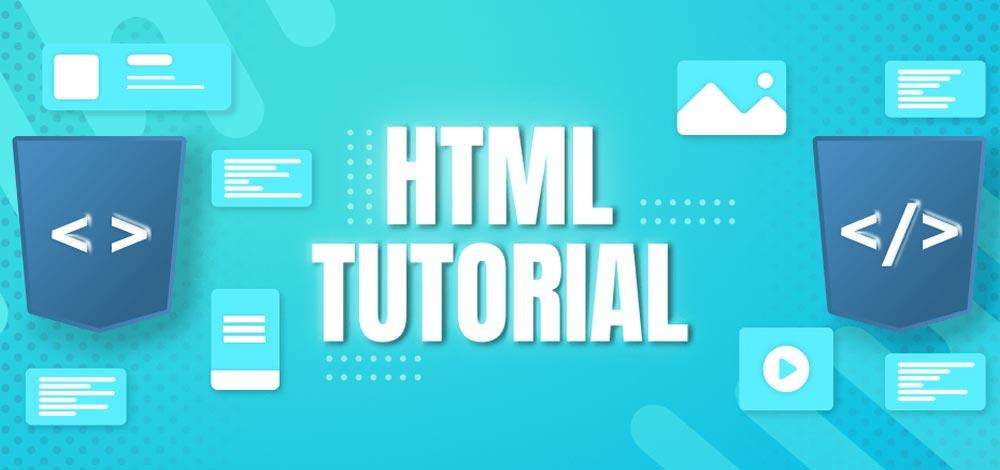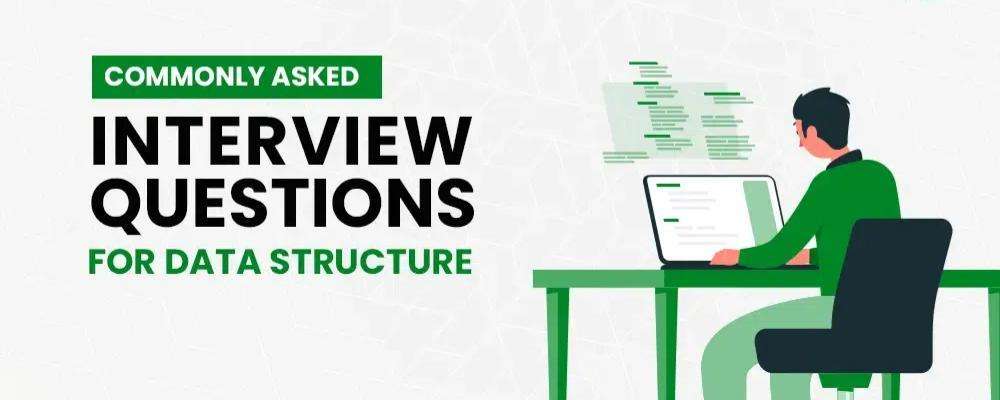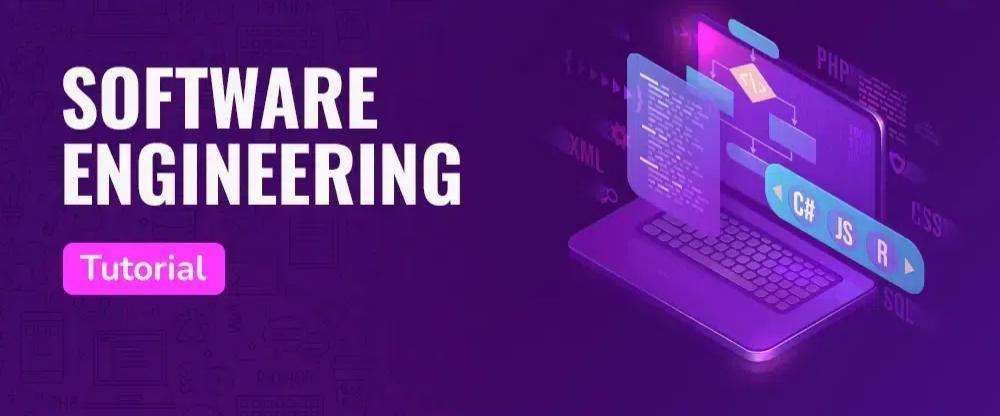
HTML serves as the web’s cornerstone, employed by countless websites to craft the pages that populate your daily browsing. Eager to master HTML from the ground up and construct your own web pages? Look no further—this guide is tailored for you.
Within this tutorial on HTML, you’ll discover the essentials of employing HTML to build and design web pages. Embark on your journey with the essentials of HTML, exploring elementary tags and their properties, classifications, structure, and adaptability.
Progressing forward, you’ll dive into the sophisticated topics of HTML5, including forms, multimedia, APIs, and beyond. As this tutorial concludes, you’ll possess a robust understanding of HTML.
Embarking on the journey of web development can be both thrilling and daunting. But fear not, aspiring web creator! This comprehensive HTML tutorial is your trusty companion, guiding you through the maze of tags and attributes to the pinnacle of web mastery.
The Basics of HTML
HTML, or HyperText Markup Language, is the skeleton of all web pages. It’s not a programming language, but a markup language that tells web browsers how to structure the content on your web page. Let’s start with the foundation:
What is HTML?
HTML, the acronym for HyperText Markup Language, is the foundational language for crafting and styling web pages across the internet. Originating from Tim Berners-Lee’s 1991 introduction at CERN, it began as a straightforward markup language. Over time, HTML has undergone a series of enhancements, progressing from HTML 2.0 to the contemporary HTML5, the most recent iteration as of 2024.
The term HTML marries ‘Hypertext,’ which establishes the interconnectedness of web pages, with ‘Markup language,’ which delineates the text document encased within tags.
Hello World Program in HTML
HTML can be both enjoyable and straightforward. Here’s a simple “Hello World” example in HTML to demonstrate:
Code here.
This snippet is the quintessence of HTML’s simplicity, showcasing how a few lines of code can result in a web page greeting the world. As you continue to learn, you’ll find that HTML’s power lies in its ease of use and its ability to create complex, interactive, and beautiful web pages. Enjoy your coding journey!
Explanation of HTML Code.
¡》The `<!DOCTYPE html>` Declaration
This declaration defines the document type and version of HTML. It’s the first thing you’ll add to your HTML document, ensuring the browser knows what rules to follow.
¡¡》The `<html>` Element
This element wraps all the content on your entire web page and is known as the root element.
¡¡¡》The `<head>` Section
Inside the `<head>`, you’ll place scripts, style tags, and other meta-information that isn’t displayed directly on the web page.
¡V》The `<body>` Section
The `<body>` contains all the content that you see on the web page, such as text, images, and videos.
Diving Deeper to HTML
Once you’ve got the hang of the basics, it’s time to dive deeper. You’ll learn about:
- Lists: Organize your content with ordered (`<ol>`) and unordered (`<ul>`) lists.
- Tables: Display data neatly with the `<table>` tag and its companions: `<tr>`, `<th>`, and `<td>`.
- Forms: Collect user input with `<form>`, `<input>`, `<label>`, and more.
Styling with CSS
While HTML structures your content, CSS (Cascading Style Sheets) is what makes it look good. Learn how to add styles to your HTML elements to make your web pages visually appealing.
Seems hard right. Here is a simple guide on How to start.
Why to Learn HTML?
- Web Structure Foundation: HTML lays out the essential framework for all web pages, instructing browsers on the presentation of text, images, links, videos, and more.
- Ease of Use: Celebrated for its ease of learning, HTML’s clear-cut tags and syntax offer an excellent starting point for your journey in web development.
- Gateway to Web Development: Gaining proficiency in HTML paves the way to acquiring skills in more intricate web technologies such as CSS (for aesthetics) and JavaScript (for dynamic features).
- Diverse Applications: HTML equips you with the capability to create a variety of digital content, from websites to email templates and newsletters.
- Creative Expression: HTML provides a platform for manifesting your digital visions, serving as an enjoyable medium for creativity and design.
These are the core concepts encapsulated in HTML. Upon completing this tutorial, you’ll grasp the basics of HTML and stand prepared to advance to the next phase of web development with CSS.
1. HTML Basics
Here are the pivotal benefits of immersing yourself in HTML:
Grasping HTML basics empowers you to initiate the creation of web pages, transforming your digital concepts into reality. It’s the first step in a rewarding journey of web design and development, where your creativity takes centre stage on the global platform of the internet. Enjoy the process of learning and building—it’s just the beginning of what you can achieve online!
- Introduction to HTML
- HTML Editors
- HTML Comments
- HTML Elements
- HTML Attributes
- HTML Doctypes
- HTML Heading
- HTML Paragraphs
- HTML Links
- HTML Images
- HTML Semantics
- HTML Entities
- HTML Symbols
2. HTML Tags
HTML tables are a fantastic tool for presenting data in a clear and orderly fashion. They allow you to arrange information in rows and columns, creating a grid-like format that is intuitive and user-friendly. Here’s a basic example of an HTML table:
- HTML <table> Tag
- HTML <tr> Tag
- HTML <th> Tag
- HTML <td> Tag
- HTML <caption> Tag
- HTML <thead> Tag
- HTML <tbody> Tag
- HTML <tfoot> Tag
- HTML <col> Tag
- HTML <colgroup> Tag
3. HTML Lists
HTML lists are excellent for structuring content on your site with clarity. Ideal for enumerating procedures, itemizing components, or ordering elements, they enhance the legibility and facilitate comprehension of your material.
- HTML Lists
- HTML Ordered Lists
- HTML Unordered Lists
- HTML Description Lists
- HTML List Elements
- HTML <li> Tag
- HTML <ul> Tag
- HTML <ol> Tag
- HTML <dl> Tag
- HTML <dt> Tag
- HTML <dd> Tag
4. HTML Formatting
HTML is equipped with a variety of tags and attributes that serve to enhance the aesthetics of your website’s text, images, and other elements. This not only boosts the site’s visual allure but also aids users in navigating through your content and highlights key information. Let’s explore some of the common HTML formatting tags.
- HTML <i> Tag
- HTML <small> Tag
- HTML <ins> Tag
- HTML <sub> Tag
- HTML <strong> Tag
- HTML <b> Tag
- HTML <mark> Tag
- HTML <del> Tag
- HTML <em> Tag
- HTML <sup> Tag
These tags are just the tip of the iceberg when it comes to HTML’s capabilities for styling content. They provide a simple yet powerful way to format text, making your web pages more engaging and easier to read.
5. HTML Form
HTML forms are essential for user interaction on your website. They’re utilized for gathering contact information, conducting surveys, enabling site searches, among other functions. Let’s delve deeper into the world of HTML forms:
- HTML <form> Tag
- HTML <input> Tag
- HTML <label> Tag
- HTML <button> Tag
- HTML <select> Tag
- HTML <textarea> Tag
- HTML <fieldset> Tag
- HTML <legend> Tag
- HTML <datalist> Tag
- HTML <output> Tag
- HTML <option> Tag
- HTML <optgroup> Tag
These example illustrates a basic form setup, inviting users to submit their name and email, which can be a starting point for various interactive features on your site.
6. HTML Advanced Concepts
Advancing past the foundational elements of HTML, a realm of sophisticated concepts awaits. After you’ve secured a solid grasp of HTML’s core aspects, we’ll venture into the advanced territories of HTML to craft web pages that are not only interactive and dynamic but also carry significant meaning.
- HTML Iframes
- HTML File Paths
- HTML Favicon
- HTML Computer Code Elements
- HTML Emojis
- HTML Charsets
- HTML URL Encoding
- HTML Forms
- HTML Responsive Web Design
- HTML Audio
- HTML5 Video
- HTML Layout
7. HTML References
HTML references are invaluable tools that offer detailed insights and instructions on the various elements that constitute web pages. They serve as a treasure trove of knowledge for seasoned developers seeking to refine their craft, as well as novices embarking on their coding journey.
These references are designed to be user-friendly, ensuring that anyone, regardless of their experience level, can access and utilize the information to enhance their web development skills.
- Tags Reference
- Attributes Reference
- Global Attributes Reference
- Event Attributes Reference
- DOM Reference
- DOM Audio/Videos Reference
- HTML5 Reference
8. HTML Miscellaneous
This HTML guide transcends elementary instruction, inviting you to dive into a variety of tags and elements. Discover how to insert annotations, optimize for search engines, incorporate multimedia, construct forms, apply hex color codes, and earmark distinct content sections.
- Hex Color Codes
- Charsets
- URL Encoding
- Most commonly used HTML tags
- Structure of HTML Document
- HTML Form Design
- Design your First Website in Just 1 Week
- Simple Portfolio Website Design
- Design a Portfolio Gallery
- Design a web page
- Top 10 Projects For Beginners
- 10 Best HTML Coding Practices You Must Know
- Design a Login Form to an Image using HTML and CSS
9. HTML Online Quiz
To achieve proficiency in HTML, assess your understanding and refine your troubleshooting abilities through HTML quizzes. The quiz linked below is designed to bolster your logical thinking and enhance your capacity for problem-solving.
- HTML Exercise – Quiz Set 1
- HTML Exercise – Quiz Set 2
10. HTML Examples
Seeking HTML ideas? Peruse our assortment of HTML samples! Discover coding for hyperlinks, forms, tables, frames, and a variety of other elements – all methodically sorted for straightforward education.
11. HTML Interview Questions
- HTML Interview Questions for Beginners (2024)
- HTML Intermediate Interview Questions and Answers (2024)
- HTML Interview Questions For Experienced (2024)
12. HTML CheatSheet
The HTML Cheat Sheet offers a straightforward and rapid reference compilation of essential HTML elements and attributes. It is designed to furnish you with swift, precise, ready-to-implement code snippets, along with the requisite HTML tags and attributes for your convenience.
If you Prefer a course,
Why look further when our HTML/CSS Programming Complete Course offers all you need in one comprehensive program! Enroll in our Program today, and our advisors will be in touch to provide you with all the guidance and support you need.
Conclusion
Your journey through HTML is just the beginning. With practice and patience, you’ll soon be crafting websites that are not only functional but also a joy to navigate. Remember, every web developer started where you are now, and with this roadmap, you’re well on your way to becoming a web creation wizard.
RELATED ARTICLES
- HTML Complete Course Guide From Beginner to Advanced Levels
- CSS Tutorial & Roadmap
- CSS Complete Guide – From Novice to Pro CSS Concepts
- JavaScript Complete Guide From Beginner to Advanced Levels
- A Comprehensive JavaScript Tutorial & Roadmap
- Complete React Tutorial & Roadmap
- Complete NodeJS Tutorial & Roadmap
- C Programming Language Tutorial & Roadmap
- The Ultimate C++ Programming Language Tutorial & Roadmap
- Complete Ruby Programming Language Guide
- Complete Perl Programming Language Guide
- Complete Java Tutorial & Roadmap
- R Tutorial & Roadmap| Master R Programming with Ease
- PHP Tutorial & Roadmap: A Comprehensive Guide for Developers
- Golang (Go) Programming Tutorial & Roadmap: Go Beyond the Basics
- A Comprehensive SQL Tutorial & Roadmap










[url=https://oprednisone.online/]prednisone 60 mg daily[/url]
[url=http://ciproffl.online/]cipro 400 mg iv[/url]